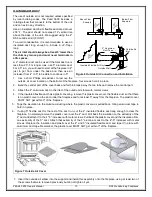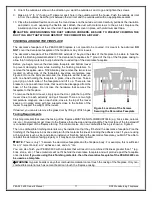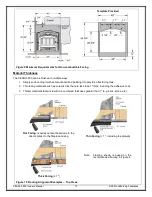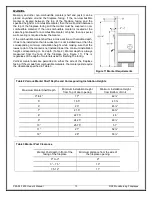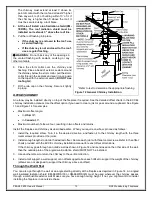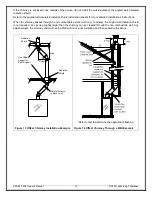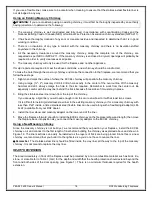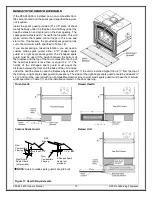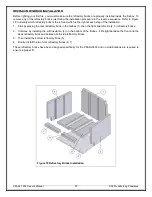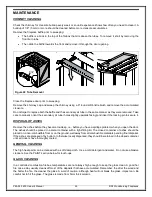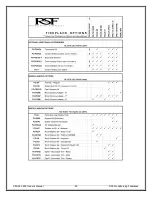
PEARL 3600 Owner's Manual
24
RSF Woodburning Fireplaces
IMPROVING EFFICIENCY
The location of your fireplace will affect how efficiently it heats the home. Your fireplace should be located in part of
the house you want to be the warmest. Trying to heat the main floor with a fireplace in the basement will generally
overheat the basement and waste fuel. Certain RSF options offer the ability to move heat from the main floor to the
basement. This allows you to efficiently heat your primary space while also heating the basement as a secondary
space.
The efficiency will also be influenced by the draft in the chimney which will be influenced by various factors (refer
to "Importance of draft" below) and by the amount of wood burning at any point (see "Burn Time vs. Heat Output"
below). The efficiency will also be influenced by the quality of the wood (refer to "Fuel" below).
All of these factors must be taken into account and optimize so you can recover the maximum heat from your
fireplace.
IMPORTANCE OF DRAFT
Draft is the natural force which pulls air from the fireplace up the chimney. The strength of draft in your chimney
depends on a variety of factors, including chimney height, nearby obstructions, altitude, etc.
Excessive draft can result in a hotter fire than intended or reduced burn times as more air is pulled through the
fireplace. It will also result in less heat recovery since the heat will not have as much time to irradiate into the room
before being sucked into the chimney.
Weak draft can result in smoke entering the room and difficulty lighting or operating the fireplace. Weak draft is
often incorrectly associated as a blockage in the air intake for the fireplace. Adding chimney height is the most
common solution. See Table 4
for minimum chimney height recommendations.
BURN TIME VS. HEAT OUTPUT
The faster your fireplace burns the more heat it will create; however, faster fires result in much more hot air flow up
the chimney which means you are sacrificing efficiency. Fast burning fires (lots of air) go through much more wood
than slow burning fires. To get the most out of your PEARL3600 fireplace, adjust the combustion air control lever
at the appropriate time. If the fire seems to be burning too quickly, turn the air down. If the fire is smoldering and
there are no visible flames, turn the air up. This way you’ll always be getting the most out of your fuel.
TROUBLESHOOTING PROBLEMS
If smoke comes into the house when the door is opened:
•
You may have opened the door too quickly and created a suction of air into the room, this can be avoided by
opening the door more slowly and letting the pressure staibilize before opening it fully.
•
Ensure your chimney is clean and your chimney cap is not plugged. Chimney caps with screens are more likely
to become clogged with creosote buildup.
•
Make sure you have adequate chimney height for your system. Refer to the Chimney section of this booklet
and make sure to take altitude, and number of elbows into consideration.
•
If you have purchased the inline blower, make sure it is off before opening the door.
•
Check to see if other fans in the home are running, particularly a kitchen range hood or bathroom exhaust fan.
This can affect the pressure in the home.
•
Try opening a window near the fireplace a little, this will equalize the pressure in the home and should correct
a negative pressure problem. Once proper draft is established the window can be closed.
•
Make sure you’ve used enough kindling to establish a hot fire quickly. The most likely time that smoke will enter
the home is during the lighting process.
If your fireplace burns excessively fast, seemingly uncontrollably:
•
Check all door seals and gaskets to ensure that air is not leaking into the firebox. See “Door Adjustment” for
details of how to verify the tightness of the door. Replace seals as necessary.
•
Inspect the secondary air tubes in the top of the fireplace to ensure they are in good condition. An unwanted
hole in the secondary air tubes can bring additional unwanted air into the fireplace.

